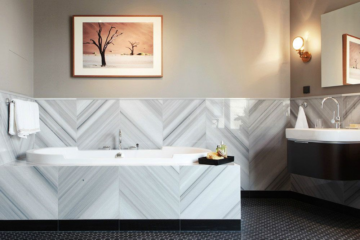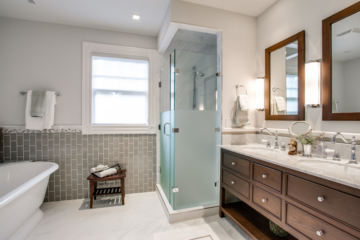Introduction
When it comes to affordable yet stylish home renovations, subway tiles have always been a favorite. Their clean lines, timeless appeal, and versatility make them a go-to for homeowners and designers looking to refresh a space without overspending. From classic white backsplashes to bold colored statement walls, subway tiles prove that you don’t have to break the bank to achieve a stylish home.
History and Origins of Subway Tiles
The story of subway tiles dates back to 1904, when New York City’s subway stations first debuted these glossy white 3×6-inch tiles. Chosen for their bright, reflective quality and ease of cleaning, they quickly became an urban design icon. Their practicality and aesthetic soon spilled into homes, where they gained popularity in kitchens and bathrooms. Over a century later, subway tiles continue to inspire modern homeowners.
Why Subway Tiles Are Timeless
Subway tiles are celebrated for their simplicity and adaptability. Their rectangular shape allows them to fit seamlessly into various design styles, whether you prefer farmhouse charm, minimalist elegance, or modern sophistication. Unlike trend-driven materials, subway tiles offer a look that doesn’t age quickly, which makes them a safe and stylish investment—even on a budget.
Different Types of Subway Tiles
Subway tiles are no longer just glossy white rectangles. Today’s market offers budget-friendly choices in a wide variety of materials and finishes:
- Ceramic Subway Tiles – Affordable, easy to clean, and perfect for most home projects.
- Glass Subway Tiles – Add a reflective shine and depth, great for smaller spaces.
- Marble-Look Subway Tiles – Porcelain options mimic marble at a fraction of the cost.
- Matte Finish Tiles – Provide a modern, understated look ideal for contemporary spaces.
- Oversized or Slim Subway Tiles – Larger or narrower options offer creative variations without significantly increasing the price.
By exploring different finishes and materials, homeowners can find cost-effective subway tiles that deliver big style.
Creative Ways to Use Subway Tiles
One of the best things about subway tiles is their design versatility. Here are some creative, budget-friendly ideas to elevate your interiors:
See more: Small Space, Big Impact: Herringbone Tiles in Compact Homes
- Classic White Backsplash – The go-to design for kitchens; timeless and affordable.
- Bold Colored Tiles – Add personality with navy, emerald, or blush hues.
- Contrasting Grout – Pair white tiles with dark grout to create a striking visual impact.
- Full Wall Coverage – Extend subway tiles from counters to ceiling for a luxurious effect at a modest cost.
- Vertical Stacking – Lay tiles vertically to add height and modern flair to smaller spaces.
- Mixed Materials – Combine subway tiles with wood or stone for a stylish, layered look.
These approaches let you get creative without overspending.
How to Choose the Right Subway Tiles for Your Space

Choosing the right subway tiles requires balancing budget, style, and practicality. Here are a few tips:
- Consider Color – White is classic and affordable, but darker tones or muted colors can add character.
- Evaluate Finish – Glossy tiles brighten small rooms, while matte tiles provide subtle sophistication.
- Think About Size – Standard 3×6 tiles are cost-effective, but exploring larger or thinner tiles can help modernize your look without a major price increase.
- Plan Your Grout – Grout color affects the overall style. Neutral grout blends seamlessly, while bold grout highlights patterns.
Subway Tiles in Modern Interior Design
Subway tiles have become a staple in modern interiors because of their ability to blend with other materials. They pair effortlessly with quartz countertops, stainless steel appliances, rustic wood, or even industrial concrete. Designers often use them to create balance in bold spaces or to add subtle interest in minimalist homes. This versatility ensures subway tiles fit into virtually any interior design scheme.
Installing Subway Tiles: DIY or Professional?
A big appeal of subway tiles is that they’re relatively easy to install, making them a cost-friendly DIY project.
- DIY Installation – For straightforward layouts, homeowners can save significantly by doing it themselves. Online tutorials and tiling kits make the process accessible.
- Professional Installation – For more complex patterns (like herringbone) or premium materials, hiring a pro ensures a flawless result and saves time.
For those on a tight budget, DIYing simple areas like backsplashes can be a smart way to cut renovation costs.
Maintaining Subway Tiles
Subway tiles are not only stylish but also practical when it comes to upkeep:
- Easy Cleaning – A quick wipe with soap and water keeps tiles looking fresh.
- Grout Maintenance – Grout can discolor over time, so sealing it during installation and occasional re-sealing will extend its life.
- Durability – Tiles resist stains and scratches, making them ideal for high-traffic or moisture-prone areas.
Their low-maintenance nature ensures that subway tiles remain budget-friendly long after installation.
Conclusion
Subway tiles have come a long way from their early days in New York City’s subway stations. Today, they represent a design solution that’s affordable, stylish, and endlessly versatile. From classic white backsplashes to bold modern patterns, subway tiles allow homeowners to create beautiful interiors on a budget. If you’re looking for a cost-effective way to elevate your home’s style, subway tiles are a smart and timeless choice.



0 Comments